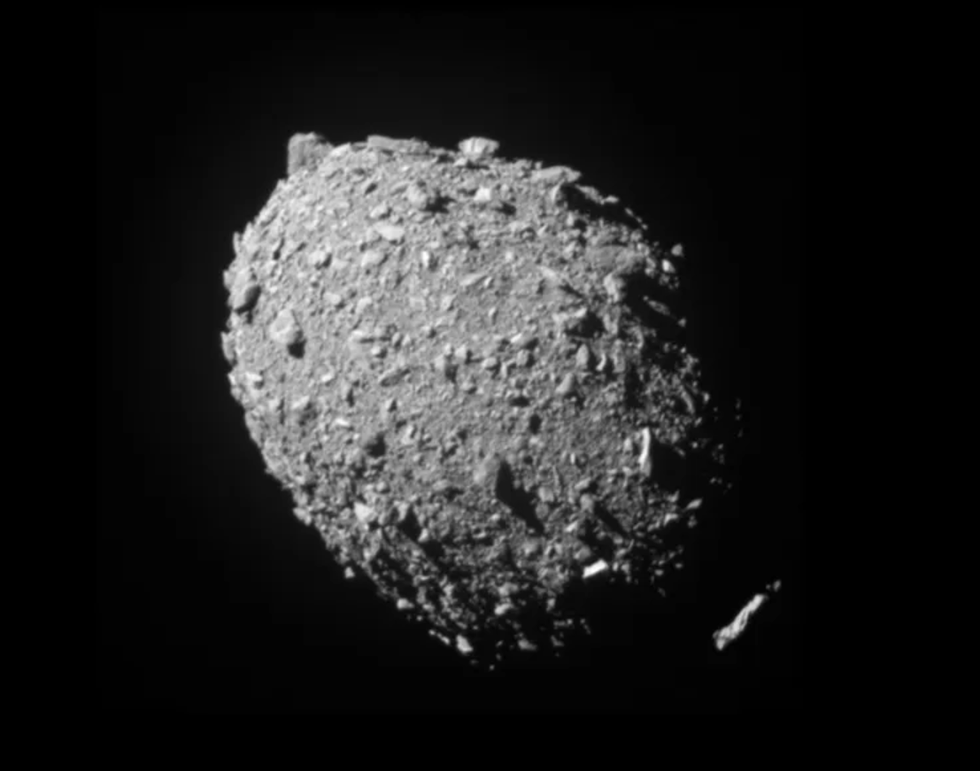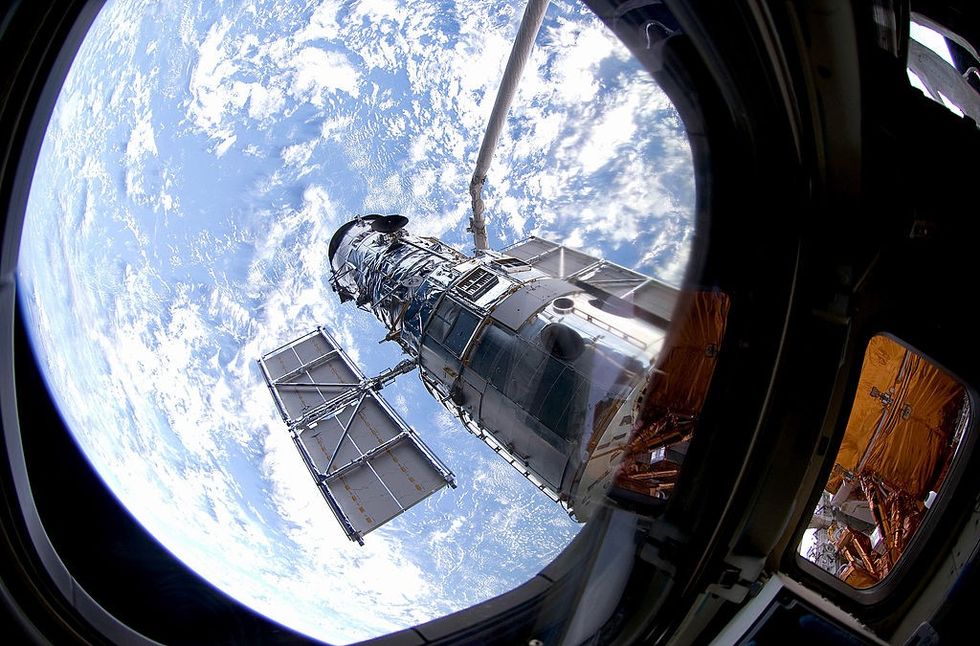Space debris to punch craters in Mars after Nasa knocked asteroid off course to test Earth's defences

A study has revealed that 37 boulders blasted off the asteroid and will enter Mars' atmosphere
Don't Miss
Most Read
Latest
A Nasa mission that purposefully launched a spacecraft into an asteroid could result in meteorites that will punch craters in Mars.
The Double Asteroid Redirection Test (Dart), travelling at 14,000 miles per hour, knocked the asteroid Dimorphos off course in 2022 in order to test Earth’s defences.
The mission was a triumph as it showed that it is possible to redirect objects in space, with Nasa tweeting “IMPACT SUCCESS!” after the collision.
However, a study has now revealed that 37 boulders blasted off Dimorphos. They pose no threat to Earth.

On Sept. 26, 2022, DART impacted the asteroid Dimorpho
|Nasa
“All the observations taken so far prove that Dart has been a successful test for asteroid deflection since it managed to change the orbital period of Dimorphos and it did not create any boulder that could impact on Earth,” the study paper, written by two astronomers, wrote.
“On the other hand, the findings presented in this work suggest that future missions involving an interaction with the surface material of a near-Earth asteroid shall be carefully planned.”
However, the scientists, Marco Fenucci of the European Space Agency (ESA)’s Near-Earth Objects Coordination Centre in Frascati, Italy, and Albino Carbognani, from the Observatory of Astrophysics and Space Science in Bologna, claim that Mars will not be so lucky.
These meteorites could shower Mars in 6,000 years, leaving behind 1,000-foot craters on the planet’s surface.
LATEST DEVELOPMENTS:
“Numerical simulations show that all the boulders of the swarm will cross the orbit of Mars multiple times in the future 20 [thousand years].”
“The simulated swarm is statistically representative of the set of 37 actual boulders recently discovered by using observations from the Hubble Space Telescope that were ejected during the impact of the Dart spacecraft on Dimorphos.
“Therefore, due to the orbit crossings happening in the long-term evolution, it is possible that some of the boulders will impact Mars in the future.”
Observations from the Hubble Space Telescope of the asteroid were studied. The scientists analysed the boulders that blasted off Dimorphos, which measured between four and seven metres.

Observations from the Hubble Space Telescope of the asteroid were studied
| GettyThe boulders are separate from the 6,000-mile debris stream that was created behind the asteroid.
Fenucci and Carbognani created computer simulations of what would happen if a seven-metre boulder entered Mars’ atmosphere.
“Given the rarefication of the Martian atmosphere, we expect the boulders to arrive intact on the ground and excavate a small impact crater,” the scientists said.
The scientists said that in future missions, more care needs to be taken when ejecting material from asteroids.











